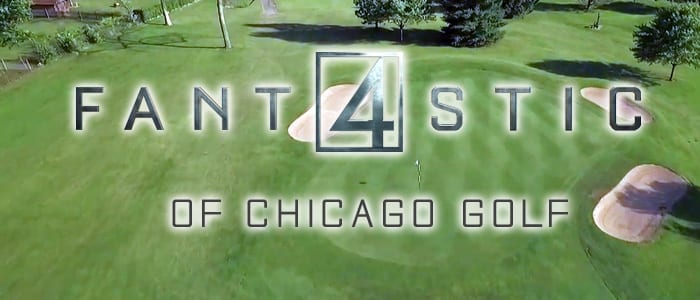 A score of “four” made on a golf hole is either a bogey, birdie, or par. Consensus would say that a birdie-four is better than a par-four, and way better than a bogey-four, but there are times when the ‘four’ as ‘par’ can delight a golfer nearly as much as a birdie-four. When level to par on an extremely difficult hole, a score of four is, ever modestly stated, fantastic; a ‘fantastic four’ is more than just a ‘score’ it is a ‘victory’.
A score of “four” made on a golf hole is either a bogey, birdie, or par. Consensus would say that a birdie-four is better than a par-four, and way better than a bogey-four, but there are times when the ‘four’ as ‘par’ can delight a golfer nearly as much as a birdie-four. When level to par on an extremely difficult hole, a score of four is, ever modestly stated, fantastic; a ‘fantastic four’ is more than just a ‘score’ it is a ‘victory’.
Throughout the years, Chicago Golf Report mulled over the hundreds of par-4 holes on public courses in our area and created a list of eighteen ‘fantastic fours’ — holes that are tough to par and that consistently act as score wreckers for the average golfer. Our 18-hole composite grabbed nine par-4 holes from the southern half of our region and another nine par-4 holes from the northside. So while the superhuman powers like those of Mister Fantastic, Human Torch, Invisible Woman, and Thing may not be required, long drives, accurate approach shots, precision putting, along with thoughtful course management are those elements needed to conquer any of Chicago Golf Report’s Fantastic Fours.
With apologies if your own personal nemesis has been omitted, here in alphabetical order are our nine challenging par-4 selections from the southside immediately followed by our nine choices from the northside. (All lengths shown are from the back tees).
Cog Hill G&CC Dubsdread 13th Hole 480 yards.
As soon as you step foot on the 13th tee and observe the narrow shoot that begins your journey, it’s obvious that this hole will be an adventure. To have any chance of reaching the green it two, you’ll need a massive tee shot that avoids the four bunkers on the left and the right. Thankfully, by Dubsdread’s standards, the fairway bunkers on this hole are somewhat mitigated. However, they will catch an errant drive, instantly turning this hole from a par four into a par five. Distance is at a premium because there is small crevasse in front of the green, prohibiting run up shots. The green itself is massive, featuring multiple tiers and some major undulations. Three big, deep bunkers guard the front left, front right and back left of the green. This is definitely one of the most challenging par fours in Chicagoland.
Mistwood Golf Club 13th Hole 369 Yards.
The tee shot on this tough par four can be quite intimidating as it features an initial carry over a creek and deep rough before reaching a fairway that is guarded by bunkers on the left side, and trees on the right. The fairway landing zone narrows with the length of your tee shot, placing a premium on finding the correct distance-direction off the tee. The fairway itself is loaded with undulation, so even a perfect tee shot could potentially provide an uneven lie in the fairway. However, the fairway is still the place to be as thick rough, deep bunkers and thick trees on the right are all hazards that could help produce a big score on this hole. The green is located at the bottom of a hill with a small bay of Loch St. James to the right. Thick fescue and moguls are located on the right, but be cautious as the green slopes from the left center to back right toward the bay. Don’t be afraid of taking advantage of the short grass in front of the green, where a chip and a putt could still get you par.
Orchard Valley Golf Course 13th Hole 451 Yards.
With a pond at the end of the fairway, yet directly visible from the tee, it’s a good idea to choose your club wisely on the tee box. The fairway slopes towards the water, so a well struck ball can quickly disappear into the abyss if you’re not careful. However, the ample length of this hole places a premium maximizing the distance of your tee shot, relative to the pond, to minimize the length of your approach shot. A massive bunker shadows the right side of the green, eager to catch a slice with a long iron or hybrid. Local knowledge and experience go a long way towards success on this hole, which the Orchard Valley yardage book named “Just A Hard Hole”.
Ravisloe Country Club 5th Hole 315 Yards.
Legendary golf course architect Donald Ross most likely had a big smile on his face when he designed this short, dogleg right par four. Ravisloe hired Ross to redesign the course in 1917 and the 5th hole certainly makes you feel his presence. There are three bunkers in the middle of the fairway, signaling the end of first landing area. With ample tree coverage on both sides of the fairway, a fade is required to advance onto the next landing pad. However, the prudent strategy for most amateurs would be to lay up before the bunkers, focusing on finding a clear approach to a green that is shielded by sand on all sides. Respect the terms set by Donald Ross and a par is possible, while an albatross is virtually impossible.. Looking for shortcuts is where ‘the Donald’ will make you pay.
Ruffled Feathers Golf Club 14th Hole 328 Yards.
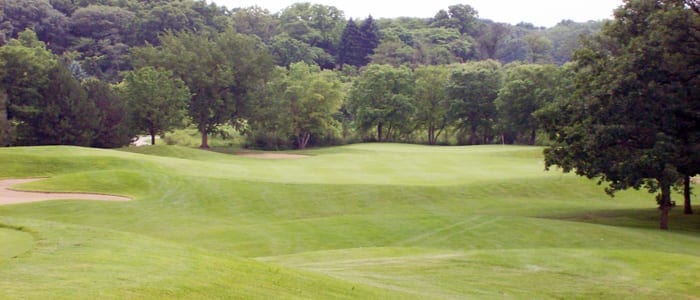
The 14th hole is truly a memorable hole that most golfers will replay in their minds after the round, wondering where they went wrong. The tee box is perched high above the fairway and green, providing a beautiful vista of the challenges and opportunity below. The fairway is wide enough to lure the sensible player, however, common sense is often lost on a rare, potentially drivable four. Course designer Pete Dye undoubtedly envisioned the mental battle of risk/reward that this hole presents when he first identified the routing. The green itself is protected by water left and some subtle elevation changes that make even the shortest of approach shots challenging. You could play this hole ten different ways and probably still be left without the answer to this riddle from Mr. Dye.
Seven Bridges Golf Club Hole 16 441 Yards.
Aptly nicknamed “Maelstrom”, this 441-yard par four begins with an intimidating tee shot that is challenged by water along the right side of the fairway and out of bounds along the left. The fairway tilts slightly to the right, towards the water, so a tee shot up the left side typically works best. The water on the right begins to wrap around the front side of the green, testing the accuracy of those who choose to aim directly towards the green. Two large bunkers catch shots from golfers who fear the watery grave on the right. This is a massive green, providing lots of potential pin placements that can dramatically affect your approach to this hole.
Silver Lake Golf Club (South Course) 8th Hole 417 Yards.
Although this hole plays 417 yards from the rear tees, this a hole that is best played strategically backward – from the green to the tee. A creek runs about 50 yards in front of the green, which is guarded by a half dozen bunkers on all sides. The green itself is expansive, which comes in handy since most approach shots will be from long irons or hybrids. The real key is finding the right side of the fairway and avoiding tree trouble on the left for your approach. If you’re playing this hole at its full distance, your tee shot has to be long enough to even allow you the opportunity on your approach to clear the water and aim for the green. This hole is a true test of distance and accuracy.
Tamarack Golf Club 16th Hole 456 Yards.
The 16th hole at Tamarack offers many challenges, not the least of which is the water along the left side if the fairway. This is a long par four that often plays into the wind, but it’s certainly not a bombers’ paradise as a well-struck driver can easily extend beyond the fairway into the water. The perfect drive is as close to the water hazard as possible, because the second shot to a slightly raised green could be out of reach if you’re not close enough to the hazard. The large green is protected by deep bunkers on the sides, limiting the room for error with your approach shot.
Whitetail Ridge 8th Hole 398 Yards.
You’ll need to cross water twice and avoid danger near the green to conquer this tough par four. With water all along the right side of the fairway, the ideal tee shot on the 8th hole at Whitetail Ridge Golf Club is to the right of the fairway bunker. However, club selection off the tee is critical because water guards the landing area ends at about 290 yards off the tee. A great tee shot is only the first hurdle. A large bunker sits right in front of the green, requiring a high and soft approach shot if you’re looking to attack the pin. A sensible play to avoid the bunker entirely is to play to the right.
Bittersweet Golf Club 8th Hole 422 Yards.
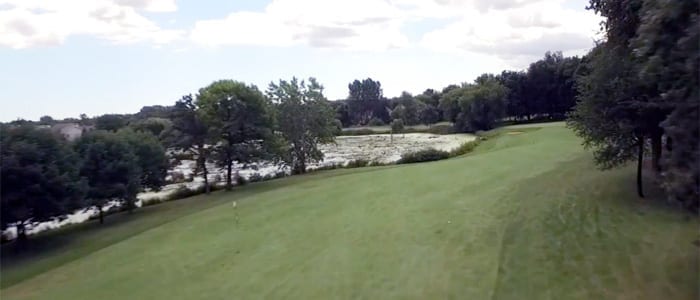
The Bittersweet website states that this dogleg to the right hole, named “Wooded Gem” is the toughest challenge on the front 9, and evokes images of dogleg holes at the famed Olympic Club in San Francisco. And while earthquakes move the ground out in the Bay Area, the acute sloping ground on this fairway ferociously moves balls toward the pond that borders the left side of the hole. If you try to aim to the right to avoid the pond there are numerous hardwood trees that create the dogleg, and the OB backyards of homes. This toughie culminates with an ultra speedy green that slopes dramatically right-to-left toward the pond.
Bonnie Brook Golf Course 10th Hole 450 yards.
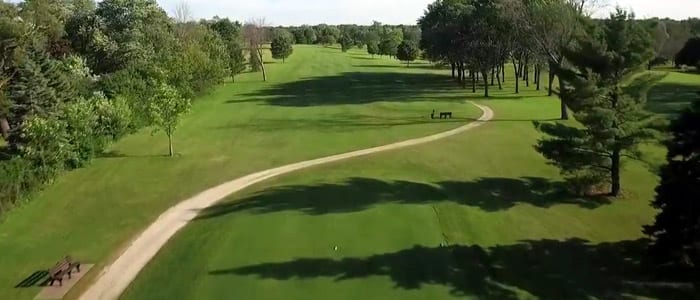
The strength and character of Bonnie Brook originates with the variety and number of its par-4’s, of which there are twelve. The longest and toughest of these is hole number 10. The hole plays north-to-south, and, against the wind during most of the regular golf season. Overswinging with the driver can bring the backyard OB down the left side into play. Even after a good drive a lengthy approach shot will remain; a kidney-shaped green containing a slight ridge makes it important to be aware of the pin location to stay below the hole on your approach. There are two greenside bunkers, one left and one right. No trickery in the layout of this hole, the trick is to get down in four shots.
Chalet Hills 5th Hole 425 Yards.
Here’s a hole where you can be bitten more than once. The hole is a slightly bending dogleg right, with trees and bushes pinching from both the rightside and leftside to narrow the fairway landing area. To get to the fairway landing area, the golfer’s drive must first carry a nasty, weedy wetland. The approach shot’s direct path to the kidney-shaped green must carry the pond. There is a beach bunker guarding the right front of the green. A firm and speedy green slopes from back-center left to front-center right. The pond, wetland, and bushes are bad for golfers, but good for mosquitoes, so you can get bitten by them as well. This hole is the Chalet Hills’ number 1 handicap. Exiting this green with a par, and you’ll have the honors on tee #6.
Foss Park 14th Hole 436 Yards.
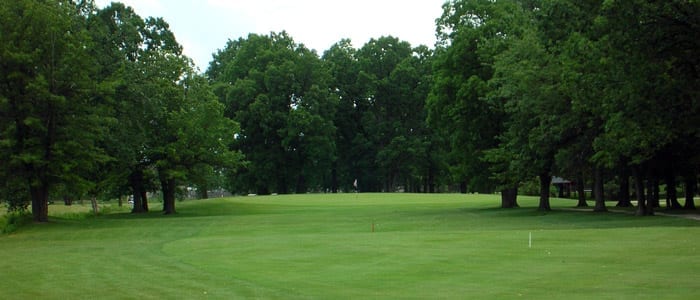
When a golfer’s shot ends up stymied in a group of trees, it is jokingly referred to as being “in jail”. That being said, Foss Park’s lengthy 14th hole is a “maximum security prison”. Hundreds of hardwood trees line both sides of this narrow fairway, and while the hole diagram on the scorecard shows a straight hole, the positioning of certain trees forces a variety of shot shapes both from the tee and from the fairway. There are no bunkers on this hole, namely because there are so many trees and consequently no room for bunkers. Low trajectory shots fare better than high shots on this hole. Can you muster up a ‘stinger 3-wood’?
Fox Lake Country Club 17th Hole 484 Yards.
The neighbor kid’s t-shirt reads “Stay Calm and Keep Focused”, which along with a big drive and a long fairway shot is all that is needed on this straightforward lengthy hole. This hole is placed near the end of the round, so if golfers aren’t already tired before teeing it up on #17 tee, the longer-than-quarter-mile effort to reach #17 green, will add further exhaustion. Par usually wins a skin.
Glen Club 7th Hole 475 Yards.
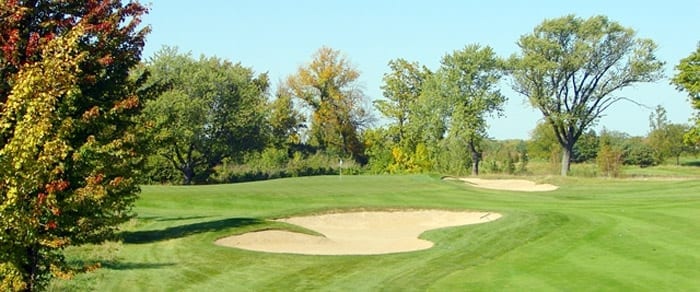
Do not be distracted by the spectacular million dollar homes that line the left side of hole number 7; possibly high-handicappers themselves, these owners paid big bucks to watch other golfers post big numbers on this difficult Tom Fazio hole. With a total of only five bunkers, three distinct bunker problems are posed by the shots that find them. Drives into any of the three leftside fairway bunkers will not reach the green in two shots. Approach shots that find the next fairway, non-greenside, bunker on the left will be facing the treacherous 60-70 yard sand blast. And lastly, shots ending up in the right greenside bunker will be challenged with a downhill shot across the narrow width of the green. Missed shots to the left of the green end up in the collection area with a 40-foot ‘do I putt / flop / chip-and-run?’ quandary.
Midlane 12th Hole 460 Yards.
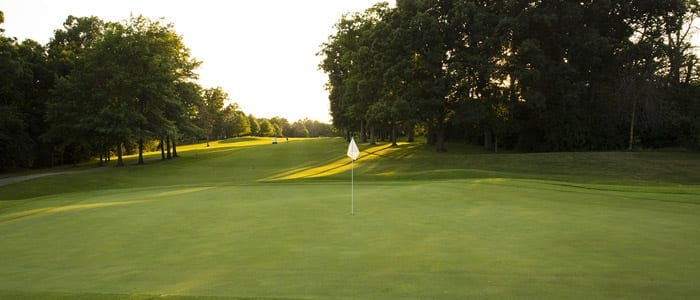
Cut through a heavily wooded area the first three holes of the back-9 are tree lined. Here on hole number-12 the houses to the left off the tee are set back, so what looks to be a generous landing area is deceiving; any drive favoring the left two-thirds of the fairway will have the approach shot to the green partially or completely blocked by trees. Trees and bluegrass rough narrow the fairway the closer you get to the green. The green’s slope and a pair of subtle undulations make for tricky putts.
Oak Grove Golf Course 15th Hole 482 Yards.
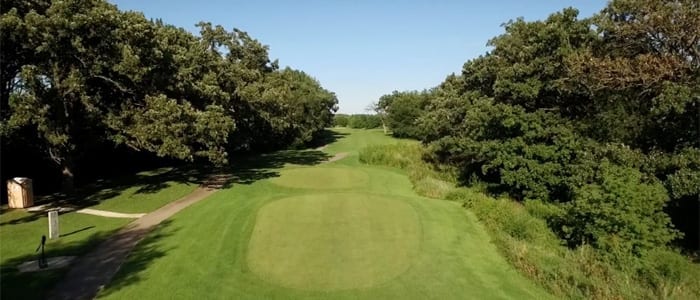
Standing on the tee of this hole named “The Eye of the Needle”, golfers may think that they must walk single file down the middle of the fairway in order to reach the green. This hole features a fairway lined by mature oaks and wetlands. A mound cuts across the fairway about 270 yards off the Professional tees (220 yards off the Tournament tees), and a solitary oak tree near the mound further narrows the fairway. The fairway up to the mound is very tight, with wetlands and woods to the left and very dense woods to the right. If a shot misses the fairway, pray it goes into the leftside trouble that is marked as a lateral water hazard, not right resulting in stroke and distance because of a lost ball. The oak tree’s physical and psychological barriers keep most tee shots from traveling past it, so as an informative note to golfers the approach to the green from the oak tree is 231 yards. The green is very large, guarded right by a greenside bunker and left by wetlands that will come into play if the ball is moving right to left. Labeled as the #2 handicap, “Needle” is by far the most difficult hole on the golf course.
Willow Glen Golf Course 10th Hole 478 Yards.
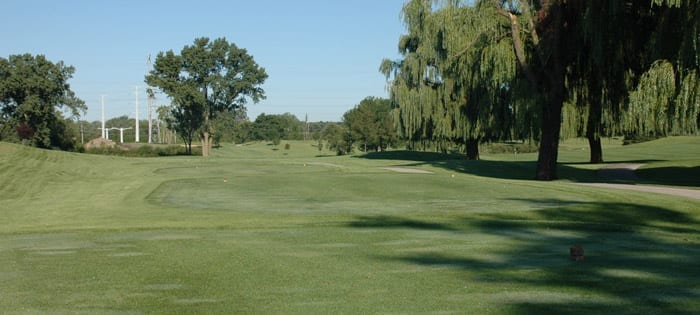
This hole was once played as a par-5, but now is a par-4 with a cornucopia of potential problems for golfers. The hole plays east-to-west, more often into the prevailing west wind and slightly uphill with out of bounds way left down the entire length of the hole. Standing on the 10th tee, golfers become visually aware of a hardwood tree in the middle of the fairway that splits the fairway into two paths at roughly the 200-yard distance from the green; the much preferred fairway is right, and the auxiliary fairway is left. Both fairway choices must cross a creek at approximately the 150-yard distance, however tall cattails and bushes have grown up from the creek on the left path (none of these on the right). While using the left fairway, shots that stop too close to the creek will be hindered by the dense, tall plants — punch-outs to the right or a lob wedge over may be the only escapes. Hole ten’s two-tiered green is guarded by a right greenside bunker. Many triple-bogey sevens are recorded here.
Chicago Golf Report would like to take the opportunity to acknowledge the talents of the architects and superintendents who then created and now maintain these ‘fantastic fours’ that always challenge and occasionally reward Chicago area golfers.





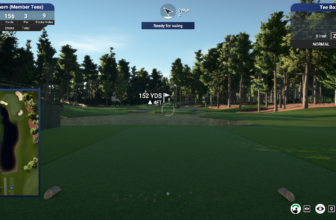
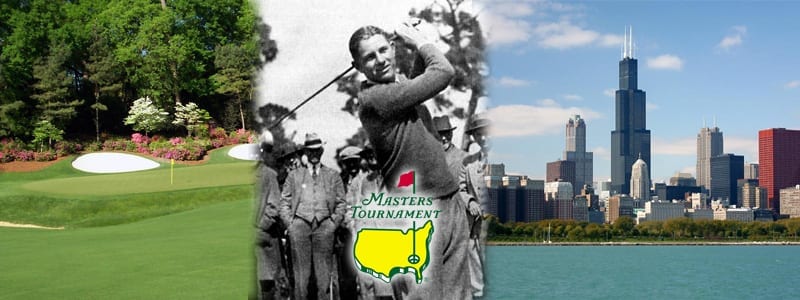

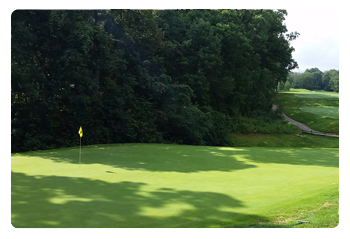 Find a Golf Course
Find a Golf Course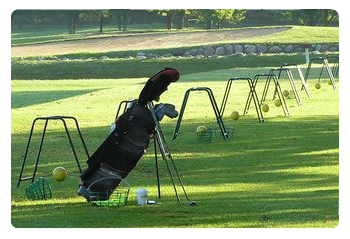 Find a Driving Range
Find a Driving Range Find a Topgolf
Find a Topgolf Find a Golf Instructor
Find a Golf Instructor